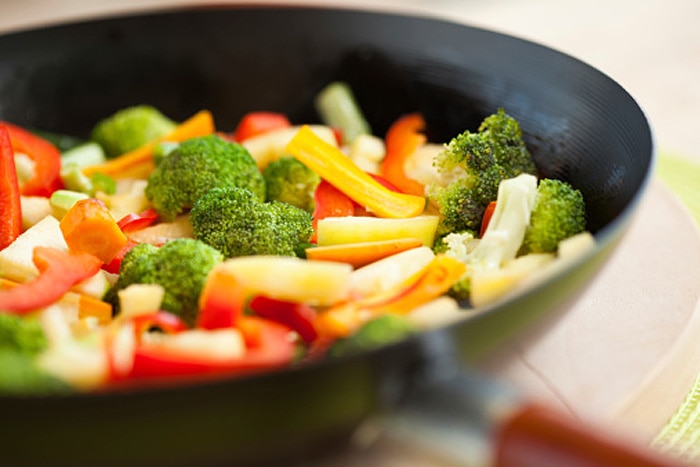
Written By: Sofia Layarda, MPH
Title: Master of Public Health
Alumni: University of California, Berkeley
Last Updated on:

Our knowledge of plant foods has grown beyond vitamins and minerals to include a growing group of compounds collectively known as polyphenols, phytochemicals, or phytonutrients, which are powerful antioxidants. How does processing (such as cooking, drying or freezing) plant foods affect their phytonutrients?

Table of Contents
It turns out that various phytonutrients are affected differently by processing, sometimes within the same food. For example, lycopene in tomatoes remains fairly stable regardless of cooking temperatures, while beta-carotene levels decrease, according to a 2010 study in the Journal of the Science of Food and Agriculture. Similarly, a 2007 Turkish study found that grilling sweet bell peppers over high heat for 7 to 8 minutes decreases the level of a phytonutrient called luteolin. However, the bioavailability of lycopene in the same food increases.
We often talk about lightly steaming vegetables instead of boiling them, because boiling results in significant loss of water-soluble nutrients (such as Vitamin C) to the cooking liquid. Confirming this, a 2008 North Dakota State University study found that steaming black and yellow soybeans results in better retention of antioxidant capacity than boiling them. But this does not apply across the board; potatoes appear to retain most of the phytonutrient chlorogenic acid regardless of cooking method (boiling, microwaving, or baking), according to a 2009 study published in the Journal of Agricultural and Food Chemistry.
Besides eating fruits raw, we also consume them dried or frozen. The processing method appears to impact antioxidant retention as well. For example, freeze-dried cranberries retain more anthocyanins and antioxidant capacity than berries dried using hot air, according to a 2010 study published in the Journal of Food Science. Individually quick-frozen (IQF) blackberries were found to retain more anthocyanins when compared to berries pressed for juice or cooked for jam in a 2010 study at the University of Arkansas.
Besides adding flavors to the foods we eat, herbs and spices also contribute antioxidants. Simmering, soup making, and stewing appear to increase antioxidant capacity, while grilling and stir-frying decrease antioxidant capacity, according to a 2008 study out of Kingston University in England (the ones tested were cinnamon, cloves, fennel, ginger, lavender, parsley, rose, rosemary, sage, and thyme). Freezing herbs and keeping pureed herbs refrigerated was also shown to increase antioxidant capacity, but keeping them in a vinegary form (such as vinaigrette) decreased it.
While there is no single superior cooking method, most studies show that using less cooking liquid and/or shortening cooking time helps improve retention of phytonutrients. Therefore, instead of boiling, consider methods such as steaming, blanching, stir-frying, or microwaving. Of course, there are recipes for which boiling still makes sense, such as soups, because you will consume the cooking liquid as part of the finished dish.
As you can see, various processing methods affect phytonutrient levels and antioxidant capacity differently, sometimes within the same food. Rather than overanalyzing, it is best to consume a wide variety of plant foods prepared many different ways. Foods should be enjoyable, so prepare your fruits and veggies the way you like them and consume them regularly.
Alumni: University of California, Berkeley – Sofia believes in bringing back fun and pleasure into everyday eating. She loves cooking, and is constantly experimenting with ingredients, creating recipes and trying them out on family and friends. Her latest interest lies in finding realistic and practical ways of environmentally-friendly food/eating habits.
home cooking, phytonutrients, polyphenols, vegetables